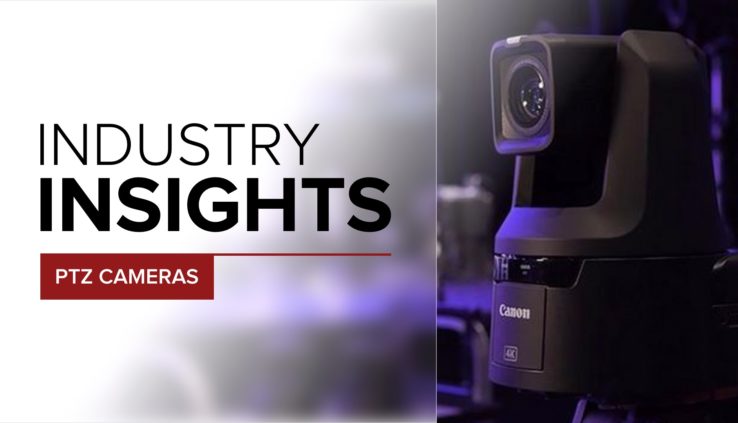Industry Insights: PTZ cameras in Broadcasting Applications
By Adam Noyes
PTZ Cameras are now a fixture of many live streaming broadcast studios. This is due to their compact size, ease of use and ability to get unique camera angles, without multiple camera operators. NewsCastStudio.com recently posted a great article detailing how PTZ Cameras like PTZOptics Cameras can find their place in your broadcasting workflow.
Check out some highlights from this article, below.
PTZ cameras have become a fixture in many broadcast studios due in part to their compact size, lower price point and robotic operation. They’re also popular for event production, house of worship and corporate applications.
From views of the anchor desk to skycams, PTZ cameras continue to increase in resolution and feature set.
In this installment of our Industry Insights roundtable, our experts from the field of broadcast cameras discuss PTZ cameras and how they fit into production.
Make sure to check out our other roundtable installment which looks at traditional studio cameras.
Has the push towards PTZ cameras by some local affiliate broadcasters helped or hurt the industry?
“Given the changing production environment with the pandemic crisis, broadcasters who have incorporated PTZ camera technologies have created more nimble scenarios for their teams,” said Paul W. Richards, director of marketing for PTZOptics.
“I believe from a viewer perspective PTZ’s offer enhanced production value, showing more perspectives in the studio and more remote contributors from home studios, especially during the pandemic. We’ve seen more and more secondary shots from our PTZ and fixed position cameras installed in newsrooms of all sizes, as these cameras provide more depth of reporting and more source options,” explained Tod Musgrave, director of cameras for Marshall Electronics.
“The use of PTZ cameras have helped the industry by offering easy-to-use and setup options that provide different shots and multiple camera angles – from a single operator. As a result of the pandemic, realities have changed and PTZ cameras have helped operators adhere to social distancing requirements and are able to be operated remotely, meaning there’s less personnel required on-site,” said Eisuke Sakai, a business manager for Sony Electronics.
“The automation offered by PTZ cameras enables production teams to incorporate more camera angles with fewer cameras and operators by creating presets for a variety of shots throughout the studio. For example, a PTZ camera can effectively capture a wide shot of two hosts seated at the anchor desk, while that same camera can pan over and zoom in to the sports desk or a meteorologist in front of a green screen with the click of one button,” said Richards.

